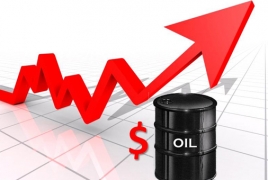
London — Hedge funds boosted their position in petroleum last week to pre-pandemic levels, encouraged by signs of a rapidly recovering global economy and continued output restraint among U.S. shale producers.
Money managers purchased the equivalent of 52 million barrels in the six most important petroleum futures and options contracts in the week to June 8, exchange and regulatory data shows.
The net position climbed to 919 million barrels, the highest since January 2020 before the pandemic took hold. Prior to that, it was the highest since the peak reached in October 2018 before the trade war between the United States and China intensified.
Fund positions broke out of the previous range of 850 million barrels +/- 50 million at the same time Brent prices broke out of their previous $65 +/- $5 range and closed above $70 a barrel for the first time since 2018/19.
Portfolio managers were big buyers of both NYMEX and ICE WTI (+28 million barrels) and Brent (+23 million) and small purchasers of European gas oil (+4 million), but sellers of U.S. diesel (-1 million) and gasoline (-2 million).
Across all six contracts, bullish long petroleum positions outnumbered bearish short ones by a ratio of almost 6:1, which is in the 77th percentile for all weeks since 2013 and indicates high confidence that prices will rise even further.
In NYMEX WTI, the number of bearish short positions has fallen to its lowest for more than two years as the renewed uptrend in prices forces short sellers to buy back their positions.
In European gas oil and U.S. diesel, the contracts most closely linked with manufacturing activity, freight and the economic cycle, the combined ratio of long to short positions climbed to its highest since 2018.
The global manufacturing and construction boom is encouraging heavy consumption of other middle distillates, even as restrictions on international passenger aviation continue to limit consumption of jet fuel.
At the same time, the lack of a production response from the OPEC+ group and U.S. shale producers has left output running well below consumption and is continuing to lift crude prices.
In real terms, crude prices are now well into the upper half of the distribution for recent decades, signalling the urgent need for more output to stabilise global inventories and prevent the market overheating.
But prices are likely to continue rising until they elicit an output response from one or more of OPEC+, Iran (with the expected ending of U.S. sanctions), U.S. shale producers or the non-OPEC non-shale sector outside the United States.



